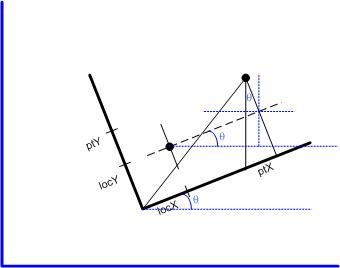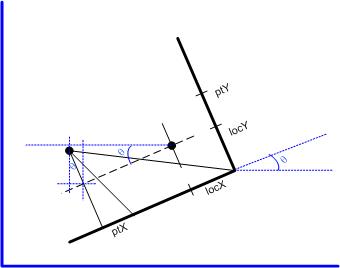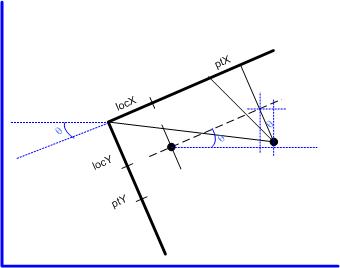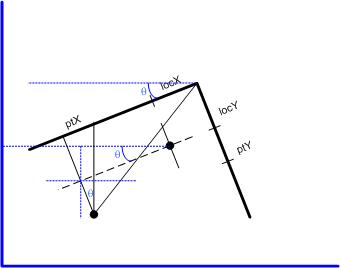Richard Dawkins, a well-known author and evolutionary biologist, gave a lecture at Caltech this Saturday, sponsored by the Skeptics society. We were fortunate to attend, thanks to a co-worker who is a Caltech graduate.
The Beckman Auditorium (on Caltech's campus) was sold out, and there were lines of people waiting to get it. The auditorium seats 1150, and we got seats in the back of the first level. There was a surprising (to me) number of senior citizens, considering that Caltech contains many young students. (Other people in my group, based on their experience with other extra-curricular lectures on campus, pointed out that older members of the nearby community are the most likely to attend these types of things.) It was definitely a friendly crowd for Dawkins, and they erupted into cheers and applause at several of his statements. There were relatively few nutcases. The afternoon began with the president of the Skeptics society advertising their email list, lecture series, and upcoming geology tour in southern California and Nevada ("Evolution: The fossils say 'Yes!'").
The first 45 minutes of the session were mostly readings from Dawkins new book, The God Delusion. He started off by making an important distinction: There are some people (including many scientists) who use religious language to describe the feeling of awe and connection that they have with the world and its workings. He called this "Einsteinian religion", as Einstein occasionally wrote about such things. It is a completely natural belief, as opposed to supernatural. The other type of religion is faith-based, and is the type of thing that encouraged by the major organized religions (Islam, Christianity, Judaism, etc). Dawkins said that the proponents of supernatural religions sometimes (intentionally or not) delude themselves into thinking that scientists are talking about religion in the same way that they are. They are not. He cited Thomas Jefferson several times, enough that made me wonder if Dawkins was flirting with Deism, but he rejected the notion of a creator god. He made the interesting point that intelligence (due to its complexity) seems to be a latecomer to the universe, so it doesn't make too much sense to think of an active intelligence creating the universe.
Dawkins also argued that, contrary to Christians, the Bible is not sufficient to establish a system of ethics. He read pointed out several horrifying passages. (They are classics in the atheist playbook, of course. I personally enjoyed Paine's account of them in Age Of Reason.) It could be argued that those passages aren't the important ones, or they aren't really good examples, or that faulty humans misinterpreted the word of God. But we must be presupposing some other source for ethics other than the Bible, in order to know that those passages are not right.
I enjoyed the question and answer session afterwards. This lasted over an hour, and it was interesting to see how Dawkins' responses would affect the crowd (based on the number of hands that would raise to make follow-up questions). One set of questions / answers had to do with the reasons for (revealed) religion, including a question about the evolutionary significance of religion. Dawkins said that it isn't the right question to ask, and made an analogy to the question: "What is the evolutionary significance to moths flying into flames?" Evolution provided moths with a rule of thumb (fly toward the light) that tended to work well in its original situation. Self-immolation is a byproduct of that rule of thumb. Dawkins suggested that there is evolutionary significance for children to believe their parents, and religion is a byproduct of that.
In another vein of questions, he pointed out that extremists and terrorists are a small portion of the overall (faith-based) religious community. However, "moderate" clerics share some amount of blame, though, as they foster an environment that allows "extremists" to be unquestioned. If one should not (or even, can not) question the rationale behind one's beliefs (i.e. if faith is allowed as a way of knowing and is unquestioned), then extremists can justify anything. I was reminded of an observation soon after the September 11th attacks, in the suburban neighborhoods near my parents in Indiana: There were a surprising number of homes that had a small placard posted in their front yard, with a list of the Ten Commandments on them. I think that they were trying to point that that terrorists were either not Christian, or that murder was wrong, or maybe it was time to get "old testament" on the terrorist-supporting nations. While perhaps those things are true, they seemed to miss the point: The Islamic extremists are explicitly religious, and their problem seems to be too much faith rather than too little.
In the Q&A session, Dawkins suggested something to do: We should not allow children to be categorized by the religion their parents. There is no such thing as a Muslim child or a Christian child… Their parents are Moslems or Christians, but the children themselves have not yet formed their own, independent minds about such things. (Elizabeth pointed out, afterward, the difficulty of dealing with the children of Jehovah's Witnesses in the hospital, when they need blood transfusions. The children themselves are not Jehovah's Witnesses... Their parents are.)
There was one disappointment: One questioner asked what Dawkins thought about Ayn Rand's philosophy, in particular her view of reason as the basis for ethics and that there are no conflicts between rational men. Dawkins responded that he wasn't familiar with her work. That strikes me as odd, as Rand is well-known within the secular humanist world. Dawkins had talked the entire afternoon about the virtues of scientific thinking and the failure of faith as a guide… It seems strange that he would not be familiar with the thinking of someone as close to him. Dawkins is British, though, so perhaps Rand's influence is not as large there.
Overall, it was an excellent afternoon, with interesting ideas. I will have to take a closer look at Dawkins' writings.
I looked around for some other blog reviews, and didn't find much. Comment #5 talks about Dawkins' visit to NYC. More info about Dawkins' book tour is available.





































